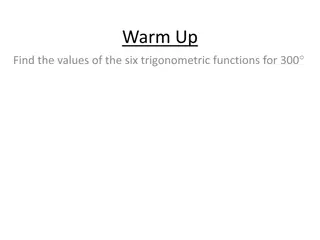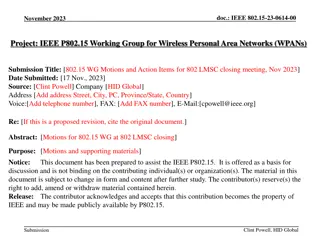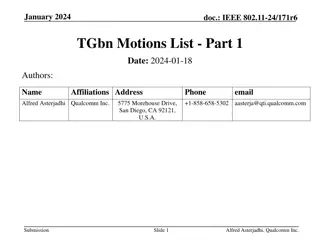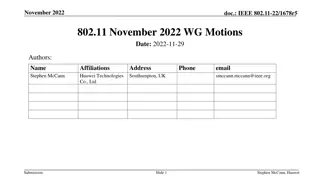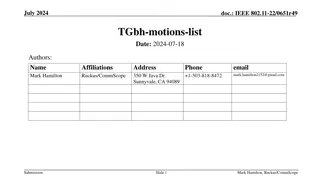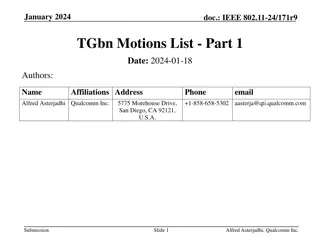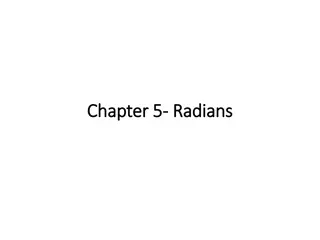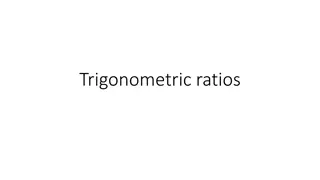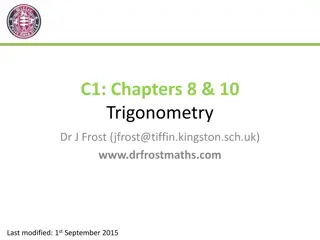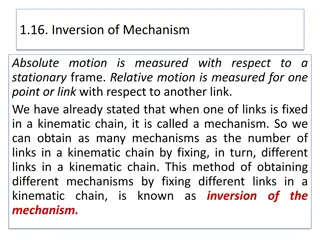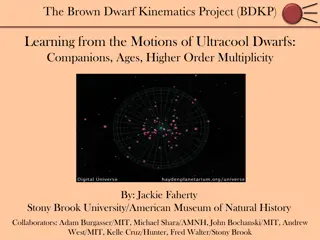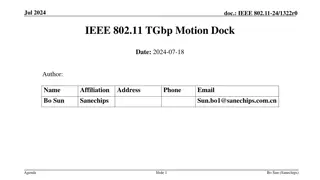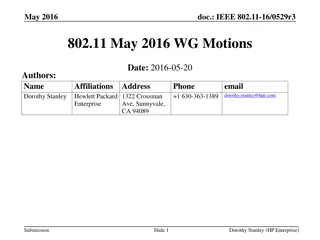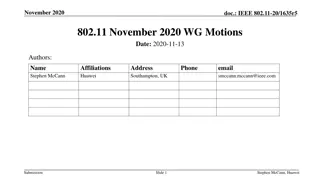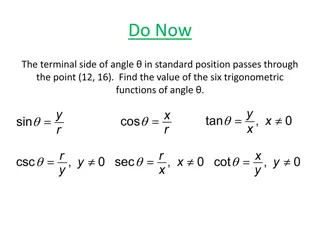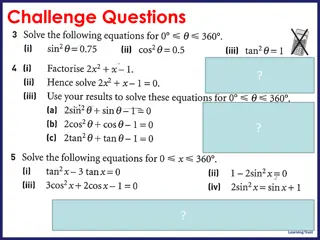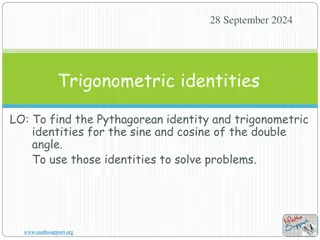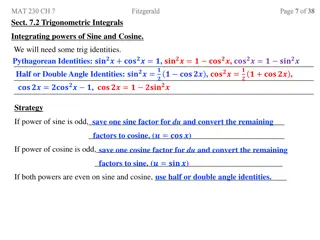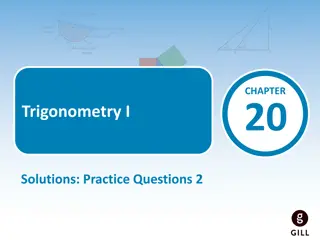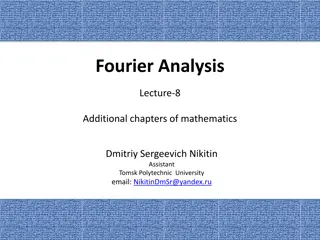Understanding Trigonometric Functions for Modeling Oscillating Motions
Trigonometric functions are powerful tools for modeling oscillating motions and repeating patterns in real-life scenarios. By interpreting and utilizing frequency, writing trigonometric functions, and using technology for accurate modeling, you can effectively capture phenomena like sound waves, pendulum motions, and seasonal changes. This guide breaks down the process of writing sinusoidal functions step by step, providing insights on amplitudes, periods, shifts, and more to accurately represent these oscillations. Check out practical examples and learn how to apply these concepts to real-world scenarios.
Download Presentation

Please find below an Image/Link to download the presentation.
The content on the website is provided AS IS for your information and personal use only. It may not be sold, licensed, or shared on other websites without obtaining consent from the author. Download presentation by click this link. If you encounter any issues during the download, it is possible that the publisher has removed the file from their server.
E N D
Presentation Transcript
Writing Geometric Functions SECTION 9.6
What You Will Learn Interpret and use frequency. Write trigonometric functions. Use technology to find trigonometric models
Frequency (Take Note underlined portion) The periodic nature of trigonometric functions makes them useful for modeling oscillating motions or repeating patterns that occur in real life. Some examples are sound waves, the motion of a pendulum, and seasons of the year. In such applications, the reciprocal of the period is called the frequency, which gives the number of cycles per unit of time.
Writing Trigonometric Functions(Take Note) Graphs of sine and cosine functions are called sinusoids. One method to write a sine or cosine function that models a sinusoid is to find the values of a, b, h, and k for y = a sin b(x h) + k or y = a cos b(x h) + k where a is the amplitude, 2? the vertical shift. ?is the period (b > 0), h is the horizontal shift, and k is
Write a function for the sinusoid shown(Take note). Step 1 Find the maximum and minimum values. From the graph, the maximum value is 5 and the minimum value is 1. Step 2 Identify the vertical shift, k. The value of k is the mean of the maximum and minimum values.
Step 3 Decide whether the graph should be modeled by a sine or cosine function. Because the graph crosses the midline y = 2 on the y-axis, the graph is a sine curve with no horizontal shift. So, h = 0. Step 4 Find the amplitude and period. The period is The graph is not a reflection, so a > 0. Therefore, a = 3.
The function is y = 3 sin 4x + 2. Check this by graphing the function on a graphing calculator.
Two people swing jump ropes, as shown in the diagram. The highest point of the middle of each rope is 75 inches above the ground, and the lowest point is 3 inches. The rope makes 2 revolutions per second. Write a model for the height h (in inches) of a rope as a function of the time t (in seconds) given that the rope is at its lowest point when t = 0. Step 1 Identify the maximum and minimum values. The maximum height of a rope is 75 inches. The minimum height is 3 inches. Step 2 Identify the vertical shift, k.





